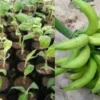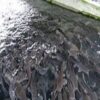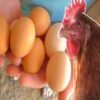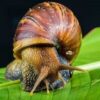- このトピックは空です。
- 投稿者投稿
- 3月 26, 2025 5:23 pm #607302

Protein is a critical nutrient for growing chickens, particularly during the pullet stage when they are developing muscle tissue and preparing for egg production.
Traditionally, protein sources like fishmeal and soybean meal have been widely used in formulating growers mash. However, the cost and availability of these conventional ingredients can be challenging, especially for smallholder farmers.
This has led to increasing interest in exploring alternative protein sources in home-mixed growers mash and their impact on growth performance. This article examines several potential alternative protein sources and their effects on the growth and development of pullets.
1. The Importance Of Protein In Growers Mash
During the grower phase, which typically spans from six to twenty weeks of age, pullets undergo significant growth and development.
Protein is essential for building muscle, feathers, and internal organs. While pullets do not require as high a percentage of protein as broiler chicks, providing adequate protein is crucial for achieving optimal growth rates and ensuring proper development of the reproductive system.
Insufficient protein intake can lead to stunted growth, delayed sexual maturity, and reduced egg production in the laying phase. Therefore, carefully selecting and incorporating appropriate protein sources in growers mash is vital for the long-term productivity of the flock.
2. Potential Alternative Protein Sources
Several alternative protein sources can potentially replace or partially substitute traditional ingredients in home-mixed growers mash, offering cost savings and increased sustainability. Groundnut cake, a byproduct of groundnut oil extraction, is a widely available option in many regions.
Cottonseed meal, another oilseed byproduct, can also be used, although it contains gossypol, a toxic compound that needs to be managed through processing and careful inclusion rates. Legume seeds like cowpeas or pigeon peas, if locally available and affordable, can contribute significant protein.
In some areas, insect meal, derived from sources like black soldier fly larvae, is emerging as a promising sustainable and protein-rich feed ingredient.
3. Nutritional Profile And Availability
Each alternative protein source has a unique nutritional profile that needs to be carefully considered when formulating growers mash. Groundnut cake is a good source of protein but can be deficient in certain amino acids like lysine and methionine.
Cottonseed meal also provides protein but requires attention to its gossypol content. Legume seeds can vary in protein content and may contain anti-nutritional factors that need to be addressed through processing like cooking or soaking. Insect meal boasts a high protein content and is often rich in essential amino acids.
The availability and cost of these alternative protein sources can vary significantly depending on the region, making it essential for farmers to evaluate locally accessible options.
4. Impact On Growth Performance Of Pullets
The impact of using alternative protein sources on the growth performance of pullets depends on factors such as the protein content and quality of the alternative source, the balance of amino acids in the mash, and the presence of any anti-nutritional factors. Studies comparing different protein sources have shown variable results.
While some alternative proteins can support growth performance comparable to traditional sources when properly supplemented to address amino acid deficiencies, others may lead to reduced growth rates or feed efficiency if not carefully managed.
It is crucial to ensure that the growers mash formulated with alternative protein sources meets the pullets’ specific amino acid requirements, particularly lysine and methionine, which are often limiting in plant-based proteins.
5. Economic And Practical Considerations
The decision to use alternative protein sources in home-mixed growers mash often hinges on economic considerations.
Alternative sources are typically explored to reduce feed costs. However, farmers must also consider the practical aspects of sourcing, processing (if necessary), and storing these ingredients. Some alternative sources may require specific processing methods to remove anti-nutritional factors or improve digestibility.
Ensuring a consistent supply and quality of the chosen alternative protein source is also important for maintaining consistent growth performance in the flock.
Farmers should carefully evaluate the cost-benefit analysis, considering not only the price per unit of protein but also the potential impact on growth rates and overall flock health.
Exploring alternative protein sources in home-mixed growers mash presents an opportunity for farmers to potentially reduce feed costs and utilize locally available resources.
While traditional protein sources like soybean and fishmeal are highly effective, options like groundnut cake, cottonseed meal, legume seeds, and insect meal can serve as viable alternatives or supplements, provided their nutritional profiles are well understood and the mash is properly formulated to meet the pullets’ amino acid requirements.
Further research and on-farm trials are essential to optimize the use of these alternative protein sources and ensure that they support healthy growth and development in pullets, contributing to more sustainable and cost-effective poultry production.
Read Also: Production of Eggs, Broiler Chickens and Hatchable Eggs
- 投稿者投稿
- このトピックに返信するにはログインが必要です。






